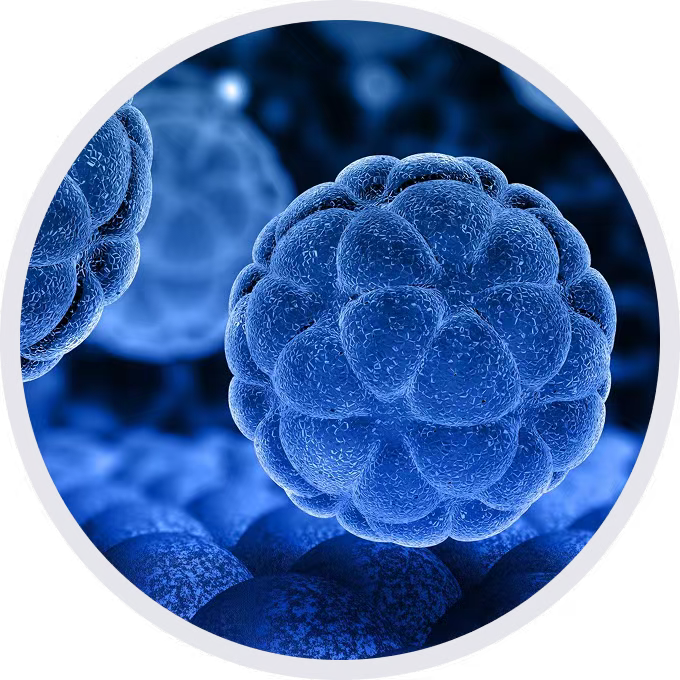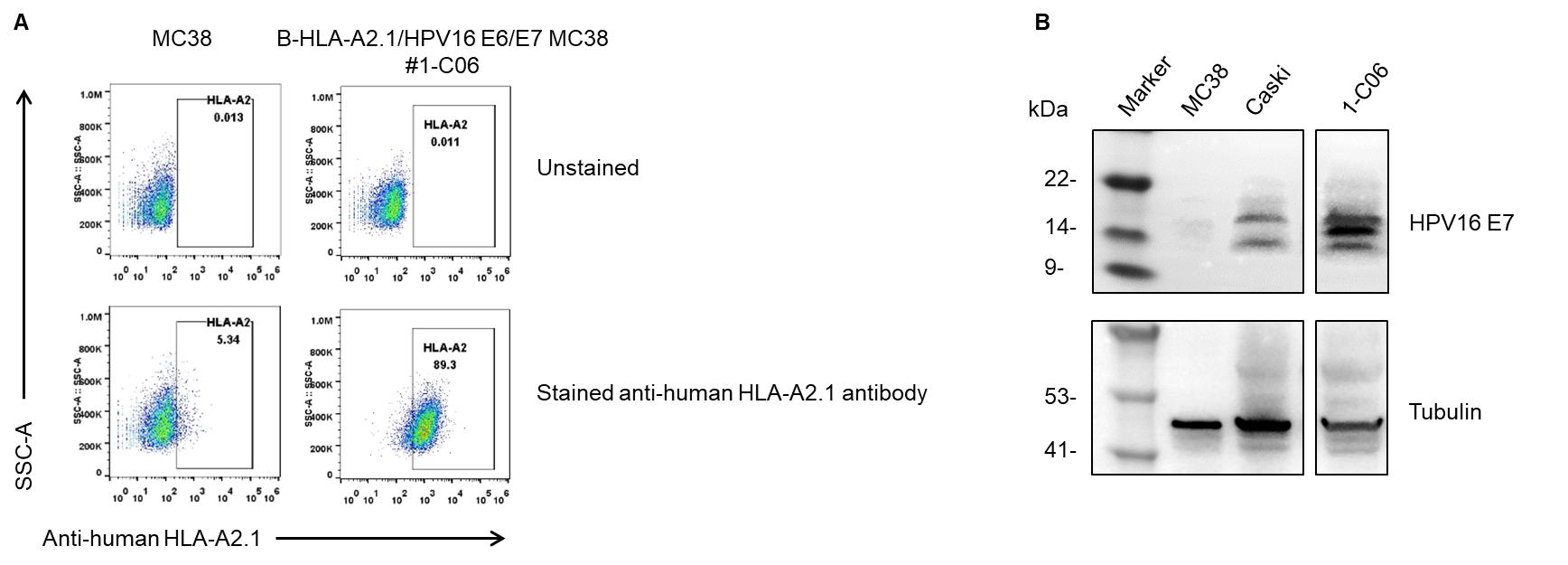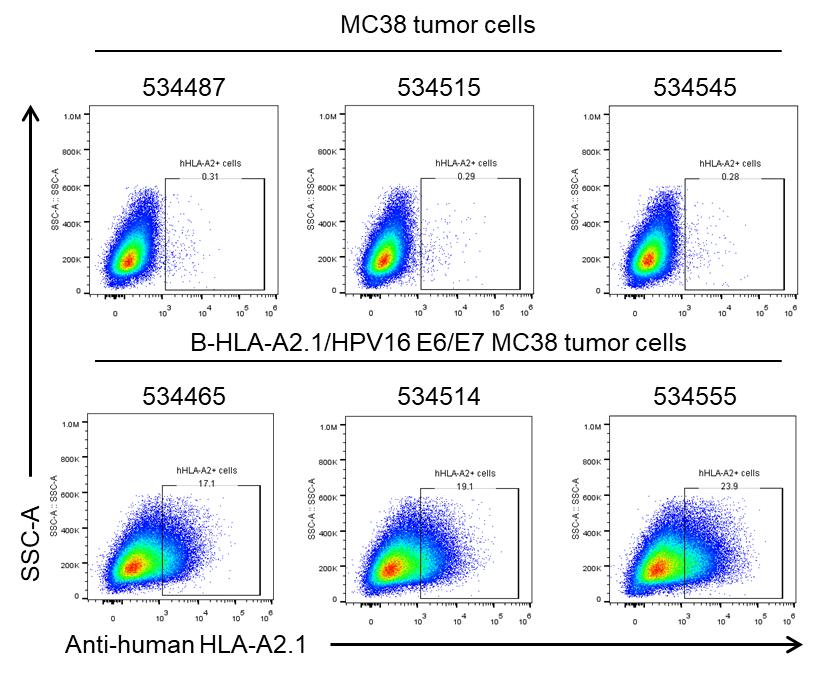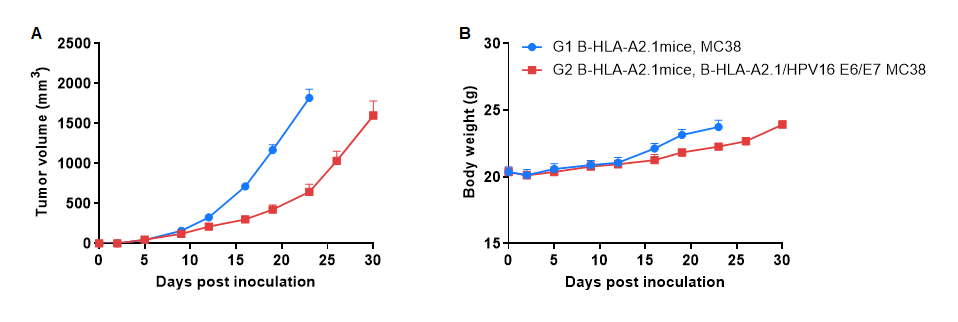
• 322401

| Product name | B-HLA-A2.1/HPV16 E6/E7 MC38 |
|---|---|
| Catalog number | 322401 |
| Strain background | C57BL/6 |
| NCBI gene ID | 567,3105,1489078,1489078 (Mouse) |
| Chromosome | 2 |
| Aliases | IMD43, AMYLD6, MHC1D4; HLAA; HPV16 E6; HPV16 E7 |
| Tissue | Colon |
| Disease | Colon carcinoma |

Human HLA-A2.1 expression analysis in B-HLA-A2.1/HPV16 E6/E7 MC38 cells by flow cytometry. Single cell suspensions from wild-type MC38 and B-HLA-A2.1/HPV16 E6/E7 MC38 #1-C10 cultures were detected with species-specific anti-human HLA-A2.1 antibody (Biolegend, 343306). Human HLA-A2.1 was detected on the surface of B-HLA-A2.1/HPV16 E6/E7 MC38 cells but not wild-type MC38 cells(A). HPV16 E7 was detected in the tumor cells(B).

Human HLA-A2.1 expression evaluated in B-HLA-A2.1/HPV16 E6/E7 MC38 tumor cells by flow cytometry. B-HLA-A2.1/HPV16 E6/E7 MC38 cells were subcutaneously transplanted into B-HLA-A2.1 mice (Female, 8-week-old, n=7). Upon conclusion of the experiment, tumor cells were harvested and assessed with species-specific anti-human HLA-A2.1 antibody (Biolegend, 343306). Human HLA-A2.1 was highly expressed on the surface of tumor cells. Therefore, B-HLA-A2.1/HPV16 E6/E7 MC38 cells can be used for in vivo efficacy studies evaluating cancer vaccines.

Subcutaneous tumor growth of B-HLA-A2.1/HPV16 E6/E7 MC38. B-HLA-A2.1/HPV16 E6/E7 MC38 (1×106) and wild-type MC38 cells (5×105) were subcutaneously implanted into B-HLA-A2.1 mice (Female, 8-week-old, n=7). Tumor volume and body weight were measured twice a week. (A) Average tumor volume. (B) Body weight. Volume was expressed in mm3 using the formula: V=0.5 × long diameter × short diameter2. Results indicate that B-HLA-A2.1/HPV16 E6/E7 MC38 cells were able to establish tumors in vivo and can be used for efficacy studies. Values are expressed as mean ± SEM.